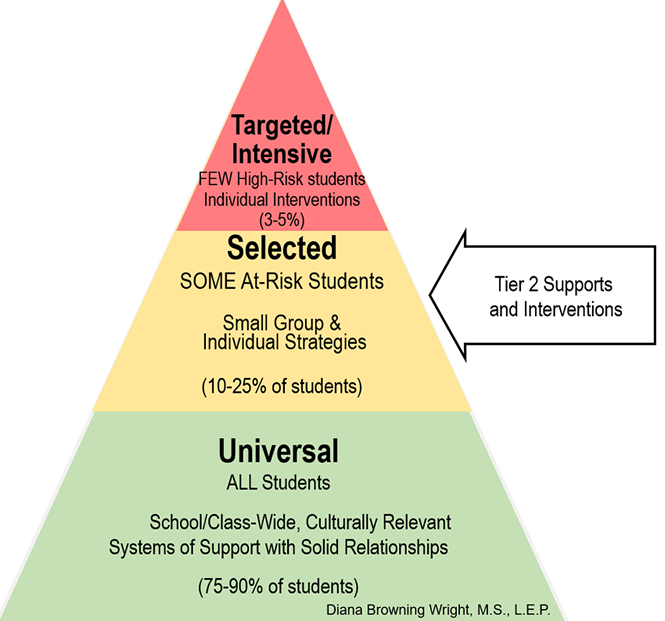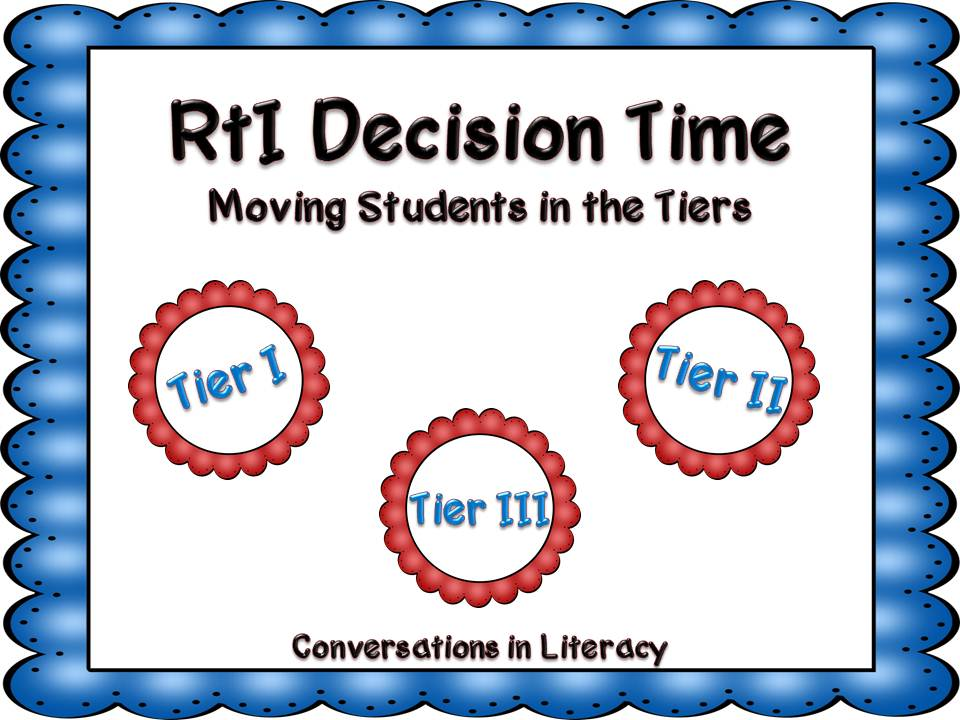What is Tier 2 PBIS?

Overview
Tier 2 supports help students who need more than universal expectations. These small-group or targeted interventions provide increased structure and frequent feedback. Students are identified using data such as referrals, attendance, or teacher recommendations. Common Tier 2 supports include Check-In/Check-Out (CICO), social skills groups, and behavior contracts. The goal is to help students quickly respond to extra support and return to Tier 1 success.

How Do You Move to Tier 2?
A student moves to Tier 2 when data shows that Tier 1 supports are not enough.
Common indicators include:
-
Multiple minor behavioral incidents
-
Frequent office referrals (but not severe)
-
Teacher requests for assistance
-
Screening tools (e.g., SRSS, behavior rating scales)
-
Decreases in academic engagement
-
Patterns of missing assignments or attendance concern

Components & Principles of Tier 2
Tier 2 supports are standardized, efficient, and evidence-based.
Schools typically implement several common interventions that can be matched to student needs.
✔ 1. Increased Structure & Predictability
Students receive consistent routines, expectations, and check-ins.
✔ 2. Rapid Access to Supports
Tier 2 interventions should be:
-
quick to start (within 72 hours)
-
simple to implement
-
available throughout the school year
✔ 3. Small-Group or Targeted Skills Instruction
Examples:
-
social skills training
-
self-management strategies
-
problem-solving skills
✔ 4. Frequent Feedback & Positive Reinforcement
Students receive more immediate and consistent responses to behavior.
✔ 5. Regular Progress Monitoring
Teams track data weekly or biweekly to determine:
-
Is the student improving?
-
Should the intervention continue, fade, or intensify?
✔ 6. Standardized, Not Individualized
Interventions use the same structure for all students in Tier 2 groups.

Common Tier 2 Interventions
📘 Check-In/Check-Out (CICO)
Daily check-ins with an adult mentor, behavior tracking, and home communication.
🤝 Social Skills Groups
Teaching communication, conflict resolution, emotional regulation.
⏰ Organizational/Academic Support
Small groups focused on homework routines, planning, or executive functioning.
Create Your Own Website With Webador